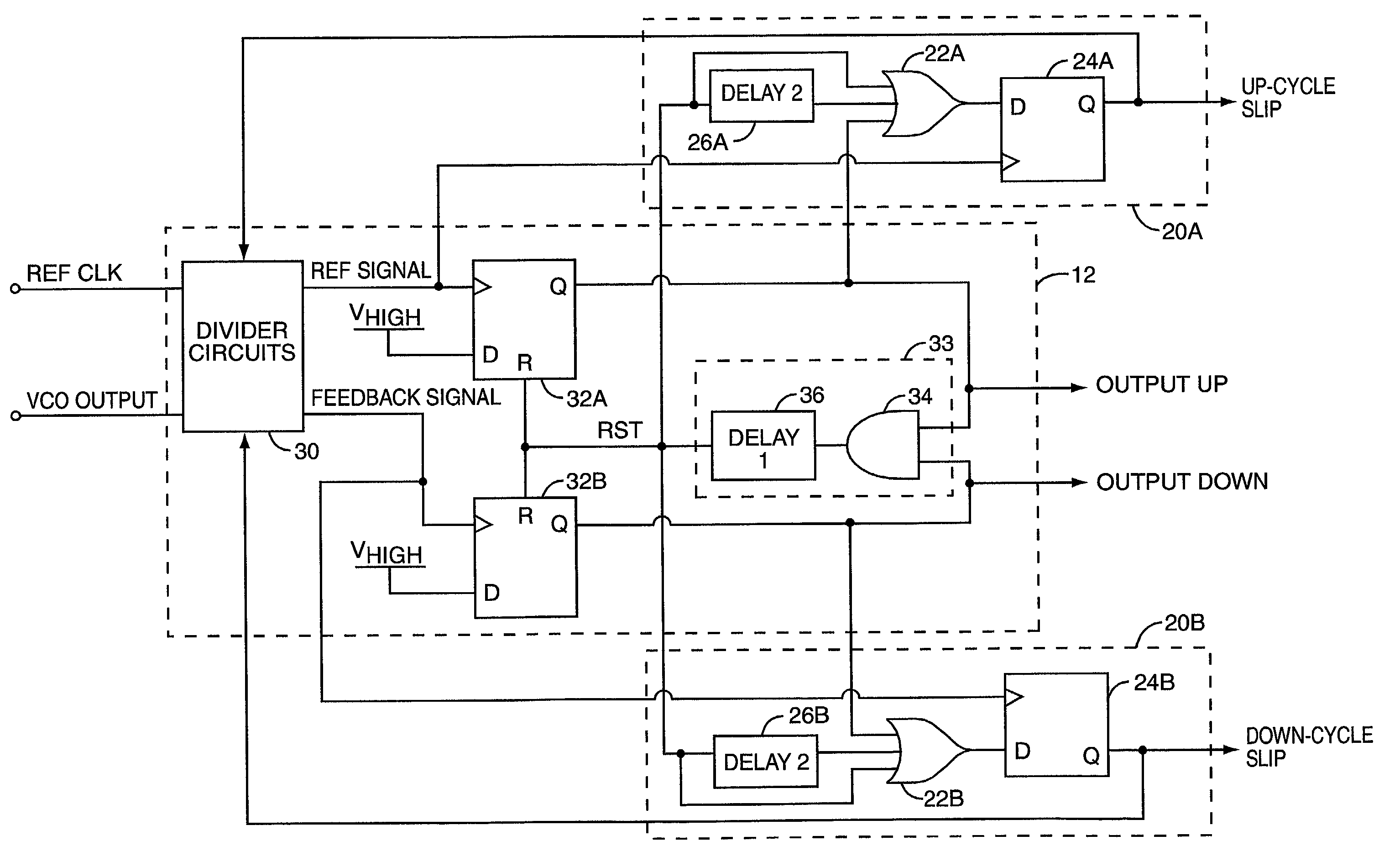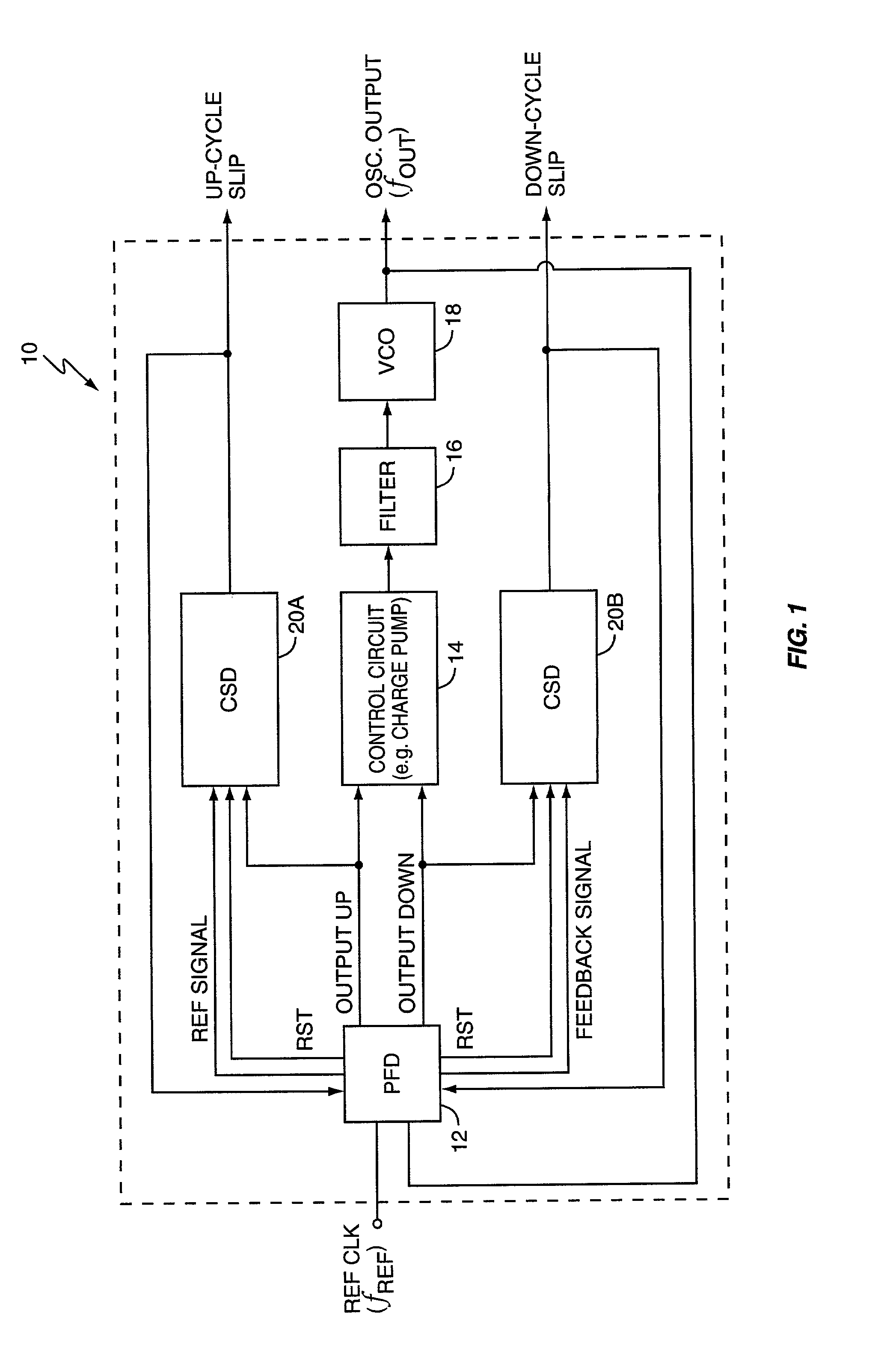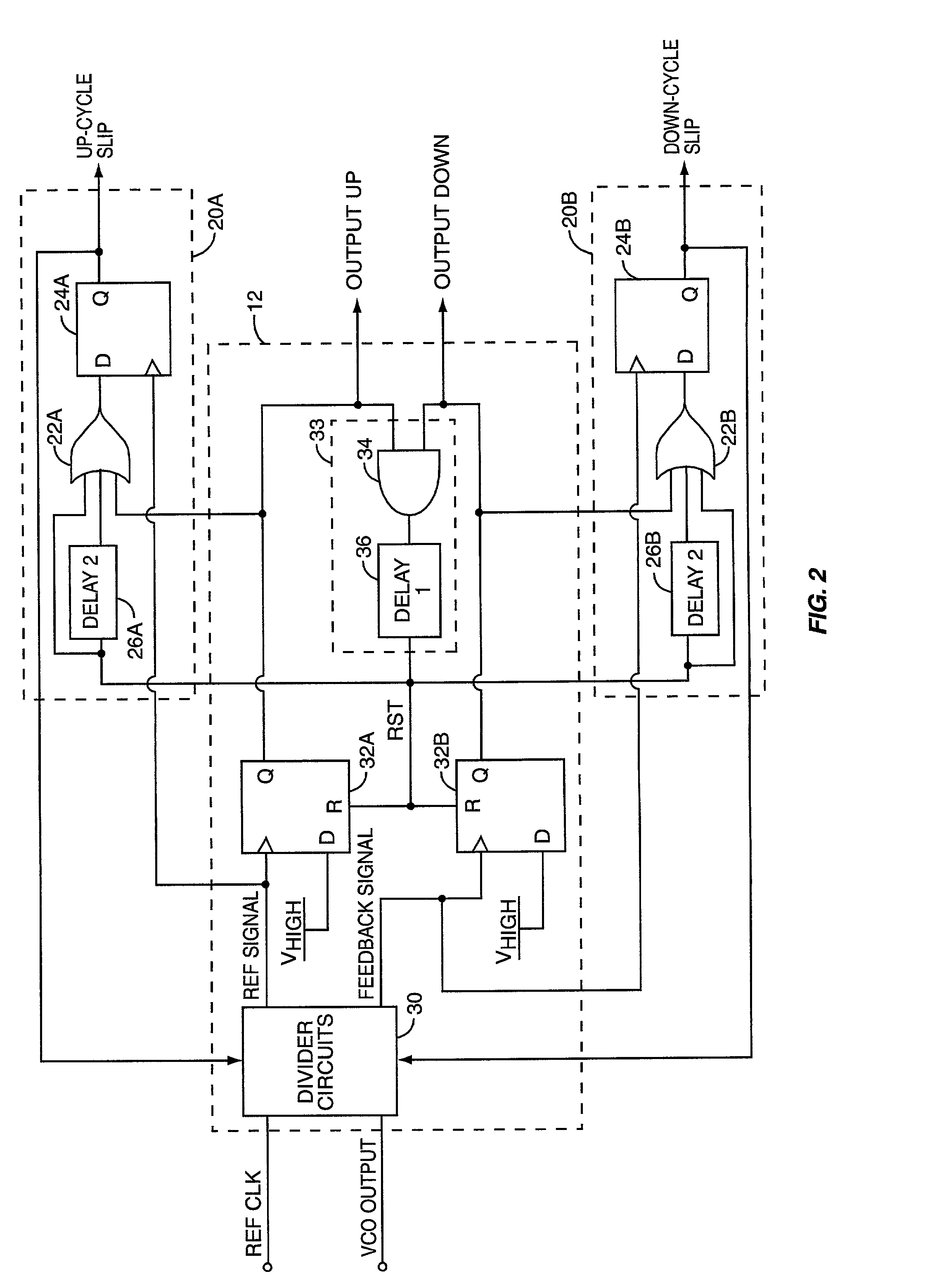PLL cycle slip detection
a phase detector and cycle technology, applied in the field of frequency synthesis, can solve the problem that the phase detector used in the pll circuit cannot provide linear detection
- Summary
- Abstract
- Description
- Claims
- Application Information
AI Technical Summary
Benefits of technology
Problems solved by technology
Method used
Image
Examples
Embodiment Construction
[0013]Turning now to the drawings, FIG. 1 is a diagram of a phase-locked loop (PLL), generally referred to by the numeral 10. The PLL 10 comprises a phase / frequency detector (PFD) 12, a control circuit 14, a loop filter 16, a voltage-controlled oscillator (VCO) 18, and cycle slip detectors 20.
[0014]In general, the PFD 12 generates PLL control signals based on the phase difference between two input signals. As shown, the PFD 12 receives two input signals, one based on the output from a reference clock (typically a crystal oscillator), and one based on the output signal from the VCO 18. The PLL 10 operates to make the VCO output signal have a frequency that is a desired multiple or fraction of the reference clock's output signal. The PFD 12 generates the PLL control signals as an OUTPUT UP and an OUTPUT DOWN signal for the control circuit 14. The OUTPUT UP and OUTPUT DOWN signals cause the control circuit 14 to adjust the control voltage applied to the VCO 18. The control circuit 14 m...
PUM
 Login to View More
Login to View More Abstract
Description
Claims
Application Information
 Login to View More
Login to View More - R&D
- Intellectual Property
- Life Sciences
- Materials
- Tech Scout
- Unparalleled Data Quality
- Higher Quality Content
- 60% Fewer Hallucinations
Browse by: Latest US Patents, China's latest patents, Technical Efficacy Thesaurus, Application Domain, Technology Topic, Popular Technical Reports.
© 2025 PatSnap. All rights reserved.Legal|Privacy policy|Modern Slavery Act Transparency Statement|Sitemap|About US| Contact US: help@patsnap.com



